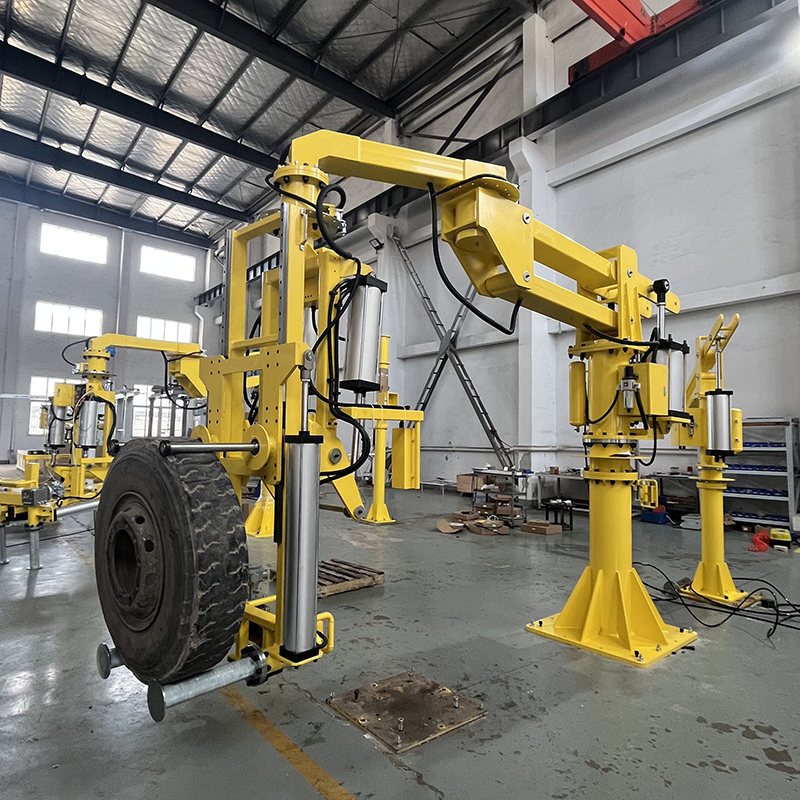Industrial machinery lifts encompass a broad range of specialized equipment designed to safely, efficiently, and ergonomically raise, lower, and position heavy machinery, components, or materials within a manufacturing, assembly, or maintenance environment. These lifts can range from small, precise manipulators to large, heavy-duty mobile platforms.
Categories of Industrial Lifting Machinery
Industrial lifts are categorized based on their mechanism, mobility, and primary function:
1. Fixed and Scissor Lifts (Vertical Lifting)
These machines are stationary or semi-mobile and are used primarily for vertical movement and elevation to create ergonomic working heights or to load/unload materials.
Scissor Lifts: Use a crisscrossing mechanism of metal supports (like scissors) to vertically raise a platform. They are used to lift machinery, workpieces, or personnel to a required height for assembly, servicing, or welding.
Dock Lifts/Lift Tables: Installed at floor level, these are used to raise or lower goods (often on pallets) to match the height of a truck bed or a conveyor system, streamlining loading and unloading operations.
Vertical Reciprocating Conveyors (VRCs): Specialized lifts used exclusively to move materials (not personnel) between different floor levels of a building.
2. Overhead Lifting Equipment
These systems use a fixed rail or structure to move loads across a horizontal plane, ideal for factory-wide transport.
Overhead Cranes (Bridge Cranes): Consist of a movable bridge that travels along fixed runways. A hoist moves along the bridge, allowing movement over an entire rectangular bay. They are essential for lifting massive machinery or components.
Jib Cranes: Fixed to a floor column or wall, they have a horizontal arm (jib) that rotates in a circular area. They are often used for localized heavy lifting and serving individual workstations.
Hoists and Trolleys: The lifting mechanism (hoist) is often paired with a trolley that allows it to move horizontally along a beam (like a bridge crane or jib crane).
3. Power-Assisted Manipulators and Balancers (Ergonomic Lifting)
These machines focus on combining lifting power with human control for precision handling.
Industrial Manipulator Arms (Balancers): These use a rigid, articulated arm and a power source (pneumatic or electric servo) to precisely counterbalance the weight of a load, creating a “zero-gravity” feel. They are used to lift and position awkward or heavy machine parts (e.g., engines, molds, castings) into place on an assembly line or machine tool.
Vacuum Lifters: Use vacuum suction to grip and lift large, flat, non-porous materials like metal sheets, glass panes, or rigid plastic boards. They are crucial for safely loading materials onto large processing machines.
4. Mobile Lifting Equipment
These machines are designed for flexibility and can move heavy loads across a facility or job site.
Forklifts and Reach Trucks: The most common mobile lifts, using hydraulic forks to lift, stack, and transport palletized goods and machinery.
Mobile Gantry Cranes: Portable crane systems on wheels that can be moved into position to lift and service heavy equipment within a facility without permanent structural changes.
Robotic Movers (e.g., AGVs): While primarily transport vehicles, some AGVs are equipped with lifting decks to automatically pick up and deliver heavy loads or even entire machine tools.
Importance in Industry
Industrial machinery lifts are vital because they:
Enhance Safety: They eliminate the risks of injury (especially musculoskeletal injuries) associated with manual lifting of heavy or awkward components.
Increase Productivity: They enable quick, precise movement and positioning of materials, reducing setup time and overall operational cycle time.
Ensure Precision: Manipulators and high-precision cranes are necessary to accurately mate large components during assembly (e.g., placing a multi-ton machine tool component with sub-millimeter accuracy).
Facilitate Maintenance: They allow maintenance personnel to safely raise, lower, and maneuver heavy machine parts (like motors or transmissions) during repairs.
Tongli industry has been committed to solving the storage and handling problems of various materials, and providing corresponding perfect and professional solutions for the complex and changeable storage and handling requirements. It also provides effective and competitive solutions to customer budgets.
Post time: Oct-13-2025


